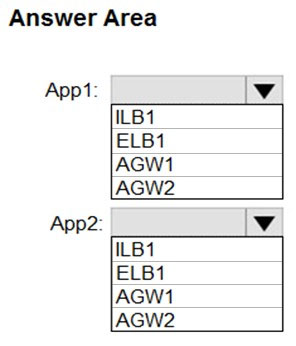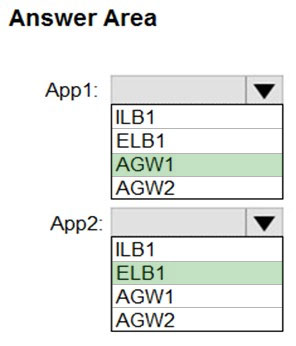

HOTSPOT -
You have an Azure subscription that contains the resources shown in the following table.
You need to deploy a load-balancing solution for two Azure web apps named App1 and App2 to meet the following requirements:
✑ App1 must support command injection protection.
✑ App2 must be able to use a static public IP address.
✑ App1 must have a Service Level Agreement (SLA) of 99.99 percent.
Which resource should you use as the load-balancing solution for each app? To answer, select the appropriate options in the answer area.
NOTE: Each correct selection is worth one point.
Hot Area:

Stephan99
Highly Voted 4 years, 6 months agoJayBee65
3 years, 4 months agoKhabibcandefeatGSP
4 years, 1 month agomedi01
3 years, 10 months agothebarber87
3 years, 5 months agoJayBee65
3 years, 4 months agoa_r_c
4 years, 2 months agoAzureGC
4 years, 2 months agoHDZ78
Highly Voted 4 years ago[Removed]
Most Recent 3 years, 6 months agoplmmsg
3 years, 6 months agojmay
3 years, 6 months agoJayBee65
3 years, 4 months agoHarryZ
3 years, 6 months agojmay
3 years, 6 months agowalkwolf3
3 years, 9 months agoThisismynickname001
3 years, 10 months agoRGP4d33
3 years, 10 months agosyu31svc
3 years, 10 months agotteesstt
3 years, 10 months agoKronos
3 years, 11 months agogpalsule
3 years, 11 months agoAZ_Apprentice
3 years, 11 months agobabyhu
4 years agoJustinWilliamAndrew
4 years agoerickim007
4 years, 1 month agopentium75
3 years, 11 months agopentium75
3 years, 11 months ago